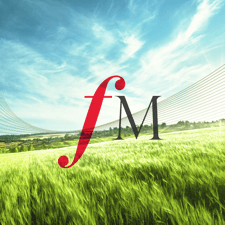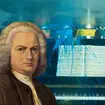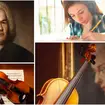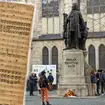Bach's biography - late works and death (1744 - 1750)
As Bach neared the end of his life, he continued to compose some of his most famous and most challenging works. Mass in B minor completed in 1749, the Musical Offering in 1747, and made a start on the mammoth 'Die Kunst der Fuge' ('The Art of the Fugue', BWV 1080), which remained incomplete when he died.
Living in Leipzig in later life, Bach lived in newly refurbished apartments of the Thomasschule, frequently entertaining other musicians from all over Europe in his large music room in which he kept six claviers. His son Carl Philipp Emanuel wrote: "no musician of any consequence passing through Leipzig would fail to call upon my father".
In 1747, Bach visited the court of King Frederick II of Prussia at Potsdam. The king played a theme for Bach and challenged him to an improvisation duel - where Bach took the king's original melody and transformed it into a three-part masterpiece. He followed up on his improvisation with the Musical Offering: fugues, canons and a trio based on the king's theme.
After years of intense work, Bach's eyesight began to fail around 1749, and the Leipzig Council began to search for a successor. He put his trust in English eye specialist, John Taylor, who had also operated on Handel, and who happened to be in the area. Unfortunately, following two cataract operations in March and April 1750, he got an infection and his health worsened.
Even when his health was failing, he continued to compose in a darkened room, writing his last choral fantasia, Before The Throne O Lord I Stand, and working on a fugue featuring the B-A-C-H musical theme (B flat, A natural, C, and B natural, in German notation).
On 28 July 1750, he woke to find he could see clearly once more, before suffering from a stroke and a high fever. He died in the evening, just before 9 o' clock, at the age of 65. He was buried in St John's Cemetery, without a tombstone - his remains were eventually recovered and now lie in the Thomaskirche in Leipzig.


























